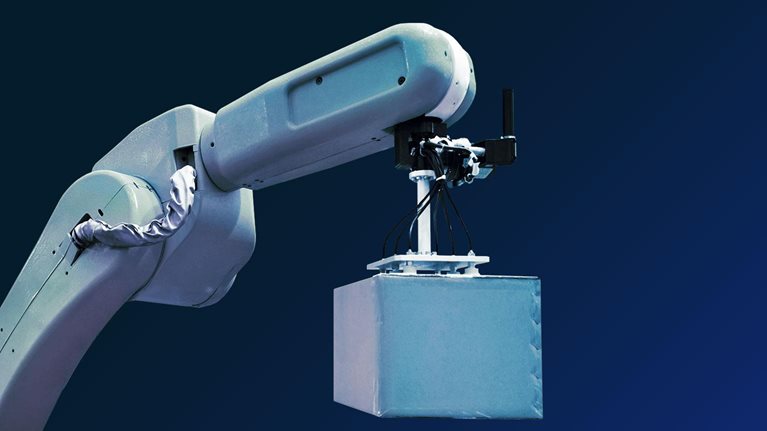Facing more intense competition from national players and emerging online attackers, some regional grocers have maintained their relevance by focusing relentlessly on the customer experience. Margin pressure continues to rise, however, limiting these grocers’ ability to invest in customer-experience and growth initiatives. In this changing landscape, traditional lean transformations will no longer be enough to keep pace.
Some industry leaders are finding a way forward: they’re expanding margins with powerful digital technologies, broadening their opportunities with new partnerships, and making organizational changes to reduce costs and boost customer satisfaction. Both shoppers and shareholders are likely to reward these grocers—leaving the laggards even further behind.
Traditional cost-cutting approaches are falling short
Shareholders reward grocers mainly for improving margins—a 1-percent rise in EBIT1 margins delivers nearly four times more value in share prices than a 1-percent rise in long-term revenue growth. This reality has spurred grocers from coast to coast to undertake more than a decade of valiant cost-cutting efforts.
Costco, Kroger, and Walmart, for example, worked hard to lower their costs by 0.08, to 1.4 percent, from 2013 to 2017. But their selling, general, and administrative (SG&A) expenses rose by 0.4, to 0.9 percent, largely because of rising labor costs (exhibit). In other words, even the most rigorous efforts to streamline operations and supply chains and to control the cost of goods sold may provide little traction on margins.2

Regional grocers can’t afford to make the same mistakes. They’re contending with many long-standing challenges, including the need to attract talent and capital in a world of start-ups and other higher-margin, higher-growth businesses—including fast-moving, well-funded pure-play online grocers. In an economic downturn, these headwinds could get stronger as revenues shrank.
Yet huge new challenges—and rich opportunities—are in sight. Grocers of all sizes must now contend with many of the same forces that have turned other industries, from movie rentals and taxis to banking and insurance, upside down. The lessons from those disruptions are stark: business as usual is the road to irrelevance, and fast, bold moves in the right direction can yield healthier margins and lasting competitive advantages.
How leading grocers add horsepower
According to our experience and conversations with senior executives, many grocers continue to pursue traditional lean transformations of store operations, supply chains, and the cost of goods sold. While those efforts can help, sustainable improvements will require harnessing new technologies, developing new talent, and forging new partnerships. Leading regional grocers are using 21st-century tools to make quick, meaningful progress in six critical areas.
Improving store operations
Technology is unlocking dramatic advances in grocery retailing: camera vision now helps managers correct stock-outs up to four hours faster than the current norm, for example. Some grocers are partnering with venture capitalists to develop even more effective shelf-monitoring technologies. A few are taking a page from other industries—for example, by using artificial intelligence (AI) to screen, interview, onboard, and retain the right people. Some use recruiting apps to create a more seamless experience for job applicants. And in the next few years, more grocers will use virtual reality–based training to improve consistency across stores and to save managers’ time.
Building, training, and retaining an effective workforce
Labor also requires urgent attention from grocers facing not only tighter job markets in many places but also a historic technology shift. Advanced analytics, AI, robotics, and the Internet of Things can make labor far more productive while changing the nature of the work people do. At a minimum, staff will need training to work more effectively with machines. Our research also suggests that automation and other digital tools will help grocers identify, recruit, train, manage, and retain workers who have the skills companies need to keep pace with fast-moving competitors.
Like companies in other industries, grocers must create partnerships with start-ups and technology companies to reskill workers more effectively and to attract new talent.
Using data and analytics for impact
Grocers pioneered the use of the Universal Product Code (UPC) in the 1970s, but only a few have the latest tools to make the best use of the mountains of data they now collect every day. A systematic, data-driven approach to optimizing merchandise includes at-scale assortment planning that bases the optimization of SKU productivity (including pricing and promotion) on consumer decision journeys, transferable demand, and predictive (and even prescriptive) analytics.

Automation in retail: An executive overview for getting ready
Many grocers calculate price elasticities and use guardrails to optimize the profitability of categories, but some leaders are now digitally integrating loyalty and competitive insights to enable personalization at scale. A few are working with radio frequency–ID (RFID) and chip makers to embed cheaper sensors in consumer packaged goods up and down the value chain.
Some are partnering with analytics start-ups that can base negotiations with manufacturers on the brands consumers prefer. And taking a cue from auto companies and other industrial leaders, a number of grocers now employ full-time negotiators with data-analytics experience, who orchestrate critical discussions with major vendors. Data analytics can show managers how to improve the supply chain’s efficiency, the cost of goods sold, and store operations quickly and significantly.
Building private brands for profitability
Innovative packaging and formulations can lower costs, and new forms of behavior can promote those and other innovations. Some grocers, for example, now conduct joint workshops with category and sourcing managers to master “should cost” modeling. Others are using value engineering and commodity analytics. Meanwhile, leaders are forging joint ventures and joining partnerships to gain scale and leverage capabilities. Some grocers and private-brand manufacturers now hedge commodities. That could be rewarding if economic volatility rises.
Gaining access to capital
Many grocers are getting more creative to increase their access to capital and to finance innovation. Some of their return-on-investment hurdles involve periods of less than three years, however, which reduces their ability to make long-term improvements. Others are seeking capital by improving G&A, but many organizations, across industries, cut in the wrong places, which adversely affects productivity.
Streamlining supply chains
To streamline supply chains, advanced grocers are moving beyond traditional network optimization and routing by using machine learning to integrate omnichannel marketing, automated planning, and ordering. Some big retailers are aggressively harnessing a range of digital solutions: Amazon, for example, is automating warehouses to improve their pick-and-delivery speed.
Some are pursuing initiatives in continuous sales and operations planning (S&OP), which improves utilization and balances demand across networks. A number of grocers and other companies are using freight consortiums to increase their share of full truckloads. In the years ahead, self-driving vehicles may help close the last mile and free grocers from the need to hire and retain increasingly expensive commercial drivers.
How to rethink transformation initiatives radically
Successful regional grocers may hear from hundreds of hardware and software vendors every year. To resist the lure of the latest shiny object, senior managers should define their strategic goals clearly before beginning any transformation: they might decide to reduce labor costs by 20 percent, for example, or to improve customer-satisfaction scores by 30 percent. Then the company should convene a team of the organization’s progressive thinkers to brainstorm ways of reaching these goals quickly by using a combination of proven and emerging technologies.
The ‘store of the future’ can include advances in many areas
Some regional grocers in North America—taking a page from European distributors and grocers, which have long used buying consortia to source not-for-resale and private-brand products—are defending their market positions by forging new partnerships. Some of these have formal charters and full-time staff; others simply help noncompeting grocers to buy in larger quantities and to optimize ingredient formulations. Before joining such alliances, companies should seek cultural and financial alignment on trade-offs and priorities.
Many industry leaders are also building new organizational capabilities:
- using electronic shelf labels to allow dynamic pricing; stores can now tailor prices instantly, with low labor costs, in every aisle of every store by taking into account the behavior of customers and competitors, analytical insights, and even the weather to build margins and basket size
- choosing the right vendors to pilot automation in noncustomer-facing activities, such as using robots to clean floors
- building business cases for specific investments, such as self-checkout
- harnessing AI to improve results across a range of tasks, from service-desk requests to shelf-space allocations
- comparing indirect spending with industry best practice
Making the best use of new tools requires new capabilities and ways of working, of course—along with a talent road map and new strategic partnerships to find solutions more quickly.
Some grocers are making quick progress with discrete pilots of new approaches and technologies. The managers involved in each pilot gain new skills and insights and can serve as champions of change in company-wide rollouts. In our experience, many of the most important investments in technology pay for themselves in less than a year, and the savings from early initiatives can help fund subsequent advances.
The time to act is now: the industry is changing faster than ever before, and the expectations of shoppers are rising as their choices expand. Moving quickly in the right direction will yield outsized returns.


